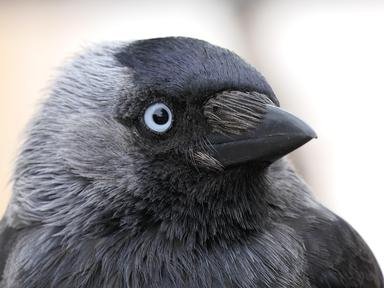Quiz Answer Key and Fun Facts
1. This is a common bird, often seen in gardens. Its size (25cm) and shape mark it out as a type of thrush. It is almost uniformly brown with paler underparts and with some mottling, but no clearly defined spots, on its breast. Which species am I describing?
2. This female is obviously a duck but which one? It is mostly mottled in various shades of brown and white, but clearly has a purple speculum (the patch of secondary feathers visible towards the tail when swimming), edged in white. Which duck is this?
3. This female is a member of the warbler family. It has fairly undistinguished markings of brownish grey back and wings with much paler underparts. It has a prominent reddish-brown top to its head. Which species do you think it is?
4. This female is a large (about 52 cm) bird of prey. It appears mostly all dark brown, with variable amounts of cream on its breast(sometimes absent) and some cream on its shoulders. There is always a cream-coloured cap to its head, visible from quite a distance. which raptor is this?
5. A familiar garden bird, this female is about 14 cm long. It has a streaky brown back and wings (sometimes with variable amounts of white). The underparts are buff-coloured. The head is light brown with a diagnostic buff stripe from the back of the eye. Which female is this?
6. Predominantly a woodland species, this female is a summer visitor, often amongst the last to arrive in springtime.
It has a pale grey head and back. The wings are darker with a prominent white patch. The underparts are mostly white with small amounts of buffy-brown. Which female is this?
7. A common garden bird, this female is about 15 cm long. The upper parts are mostly greenish-brown and the underparts are greyish brown, sometimes with a faint flush of pink. the wings appear dark in flight with white shoulders and wing-bars. this species usually walks and hops with a distinctive jerky gait. Which female is this?
8. A common large game bird about 60cm long (about a third of that is its tail), this female is cryptically coloured. It is mostly mottled brown but individuals can vary widely from dark brown to pale buff. This bird often 'explodes' unexpectedly from cover with a loud cackling call, making the observer jump. Which female am I?
9. This female is a type of duck, she usually nests along fast-flowing upland streams and rivers and is only rarely found on the sea. Her body is mostly a grey colour, there is a clearly defined white throat patch and a clear dividing line between the neck and the brown head. There is a short downward crest from the head which is not always visible. Which female duck am I?
10. This species is something of an oddity; it is classed as a wader but spends much of its time swimming and in breeding plumage the female is more brightly coloured than the male.
In breeding plumage the female has a grey head with a white throat. It has a broad, bright orange/chestnut stripe running from its nape down the sides of its neck. Its back is grey and its wings are heavily streaked with dark brown and golden yellow. Which beautiful female is this?
Source: Author
mutchisman
This quiz was reviewed by FunTrivia editor
crisw before going online.
Any errors found in FunTrivia content are routinely corrected through our feedback system.

